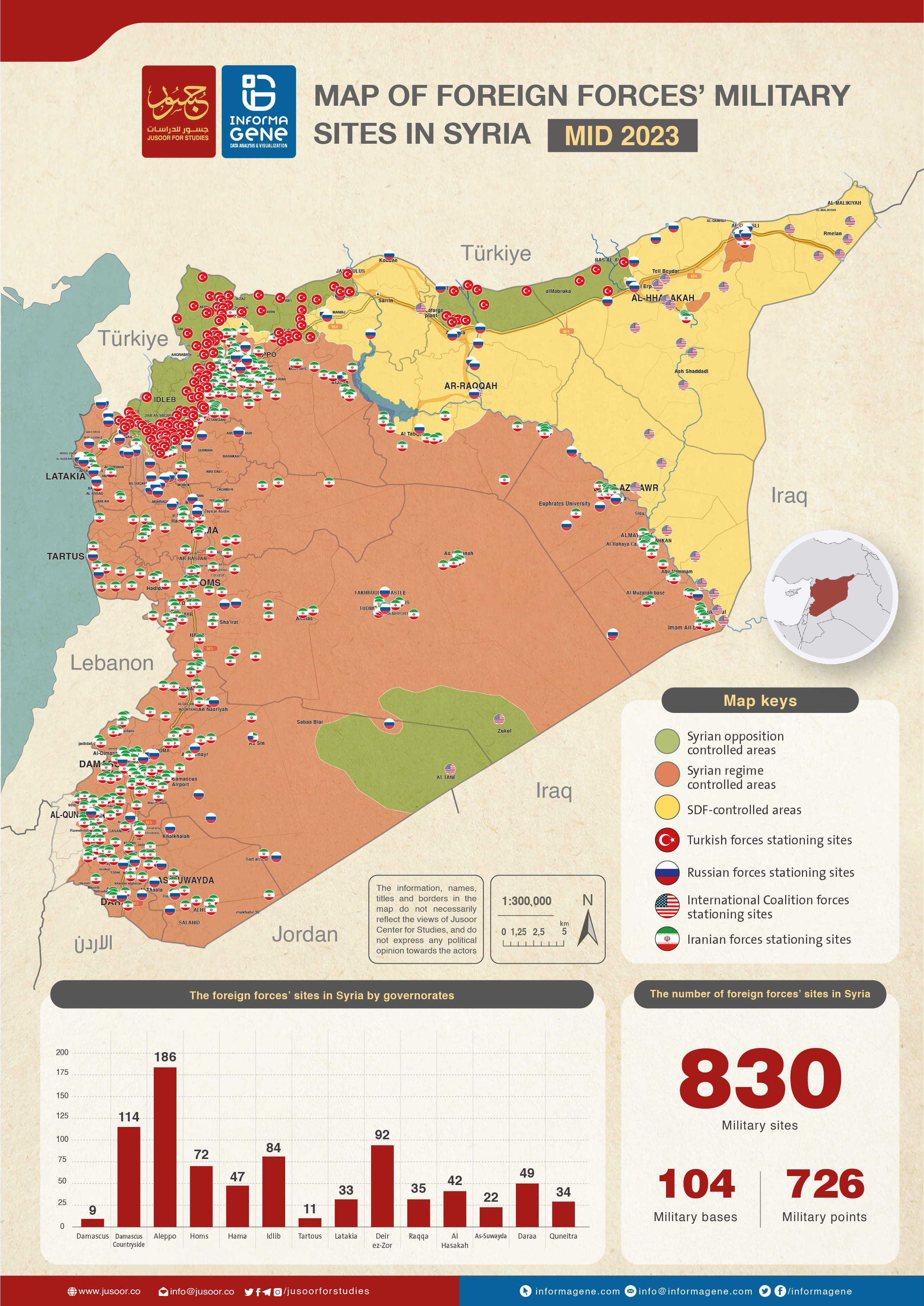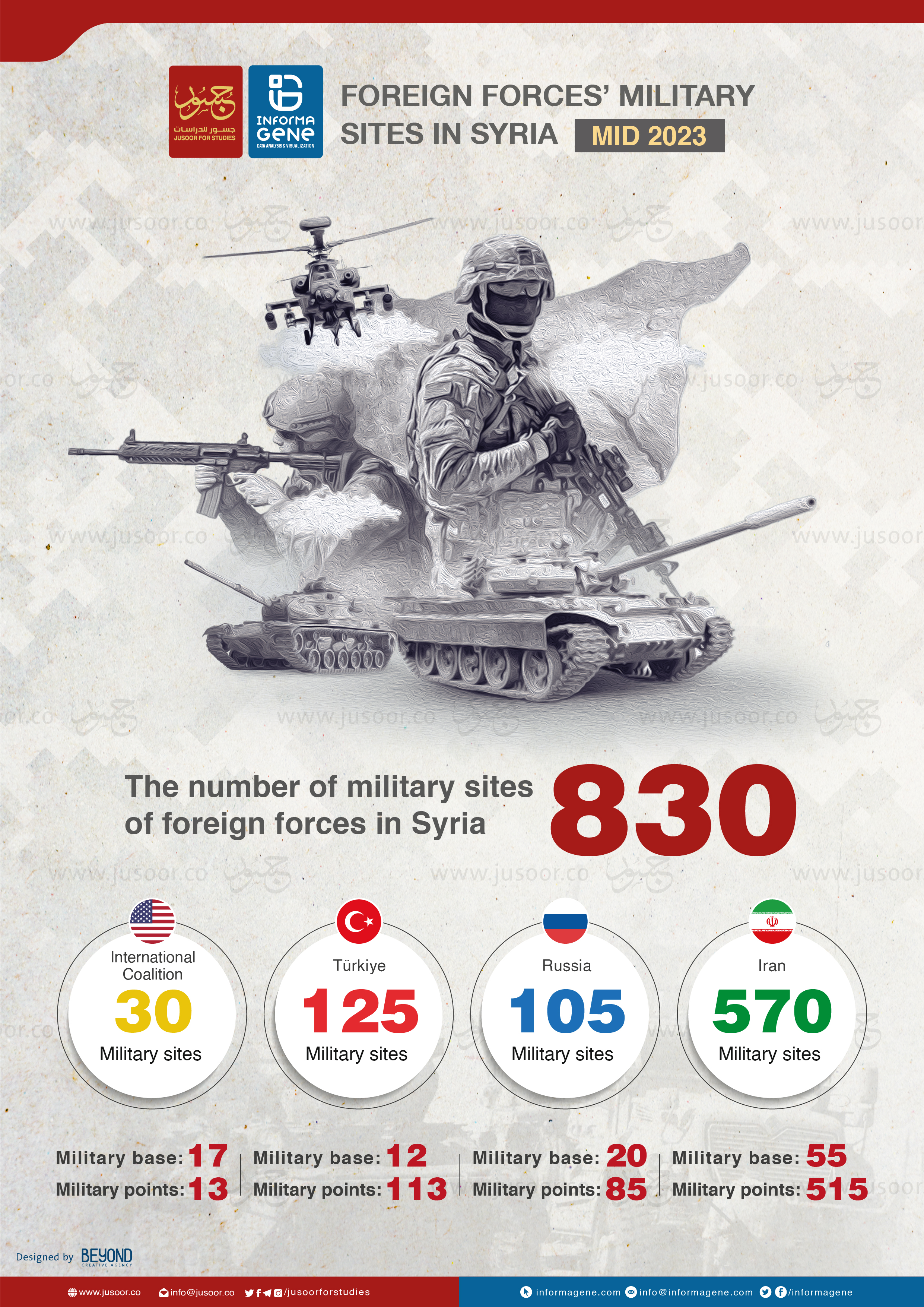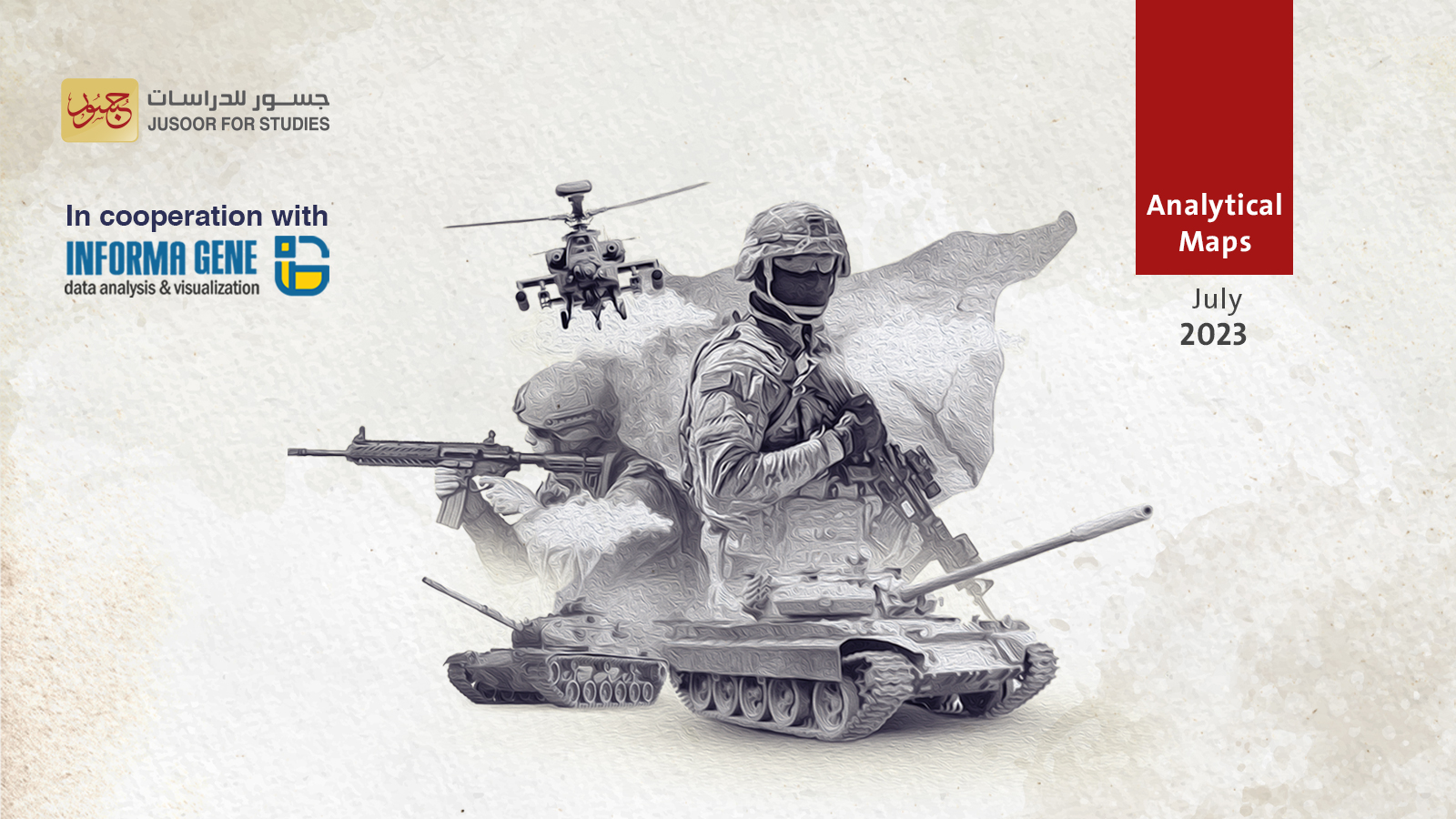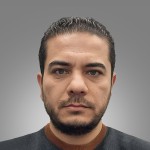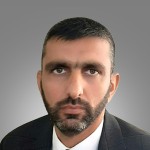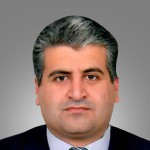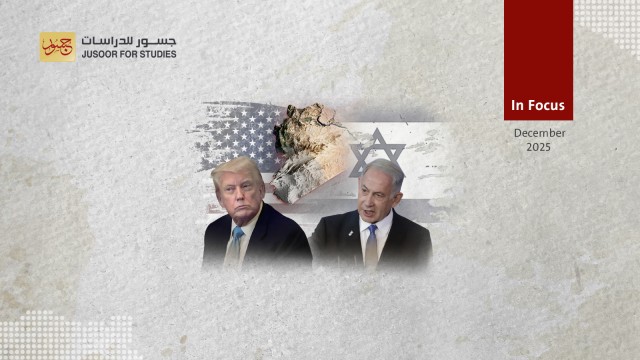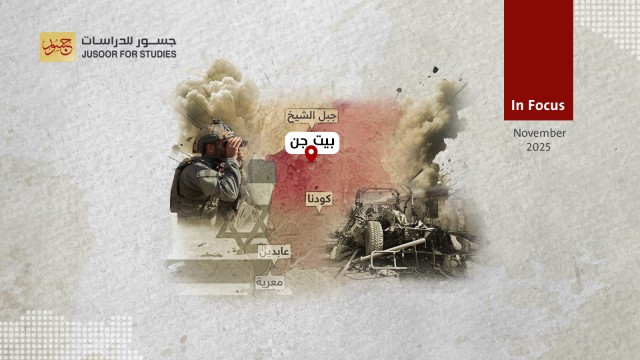Map of foreign forces’ military points in Syria - mid 2023
The monitoring of foreign powers' military points and bases on the Syrian map is a key indicator in assessing the extent of these powers' field and military influence, which is directly related to these countries' and external actors' ability to influence political decisions and the public scene in Syria.
The number of foreign powers' military sites in Syria, with their various types, distributions, and missions, indicates the external role in the Syrian scene. These analytical maps depict this foreign intervention from a security and military perspective, while this is linked to various other economic, social, and cultural aspects, leading to a political scene that has become divided among these countries and foreign powers.
"Jusoor Center for Studies", in collaboration with "InformaGene for Data Analysis Foundation", releases a set of maps and analytical charts for foreign military locations in Syria in mid-2023, which total 830 military sites distributed among the countries that constitute the foreign powers controlling the scene in Syria: the US-led International Coalition, Russia, Turkey, and Iran.
The research concludes that the number of Iranian military sites in Syria has increased, reaching 570 ones, which represents the largest foreign influence on the Syrian map, followed by Turkey with 125 sites, then Russia with 105, and finally the US-led International Coalition with 30 ones.
The analytical report attached to these maps indicates that the number of sites does not reflect the disparity in power. The United States remains the most influential in the military scene despite having the fewest number of sites in Syria. Also, the bases and military points of foreign powers in Syria vary in terms of numbers, equipment, assigned tasks, and the mechanisms that led to their intervention.
The analytical report also concludes the tasks assigned to these sites. The US-led International Coalition's sites are responsible for eliminating ISIS and ensuring it does not return, as well as achieving deterrence against Russia and Iran. On the other hand, the Turkish military sites are tasked with protecting the country's national security by maintaining the areas where Turkish forces are deployed, supporting Syrian opposition factions, and combating the Kurdistan Workers' Party (PKK) and its Syrian branch (YPG). Moreover, the Russian military sites in Syria aim to achieve Russian geopolitical interests by establishing a permanent presence in the Eastern Mediterranean. As for Iran, it strives to complete control over the area extending from Tehran to Beirut, passing through Damascus through the Iranian-run military points and bases in Syria. Iran also aims at reaching the Mediterranean.
It is noteworthy that the nature of the spread and role of foreign military sites in Syria is sometimes affected by political changes occurring outside Syria. For example, Iran has increased its military presence in the south of Syria, taking advantage of Russia's reduced commitments to Israel in the region due to the latter's position on the conflict in Ukraine.
This research product, including maps, charts, and an analytical report, provides decision-makers, politicians, and analysts with a count of foreign military sites in Syria and their distribution across provinces. This does not include local forces allied with foreign powers, taking into consideration the intensity of military activity of the countries involved in the Syrian file and its often secrecy, in addition to the continuous movement of military forces as required . 